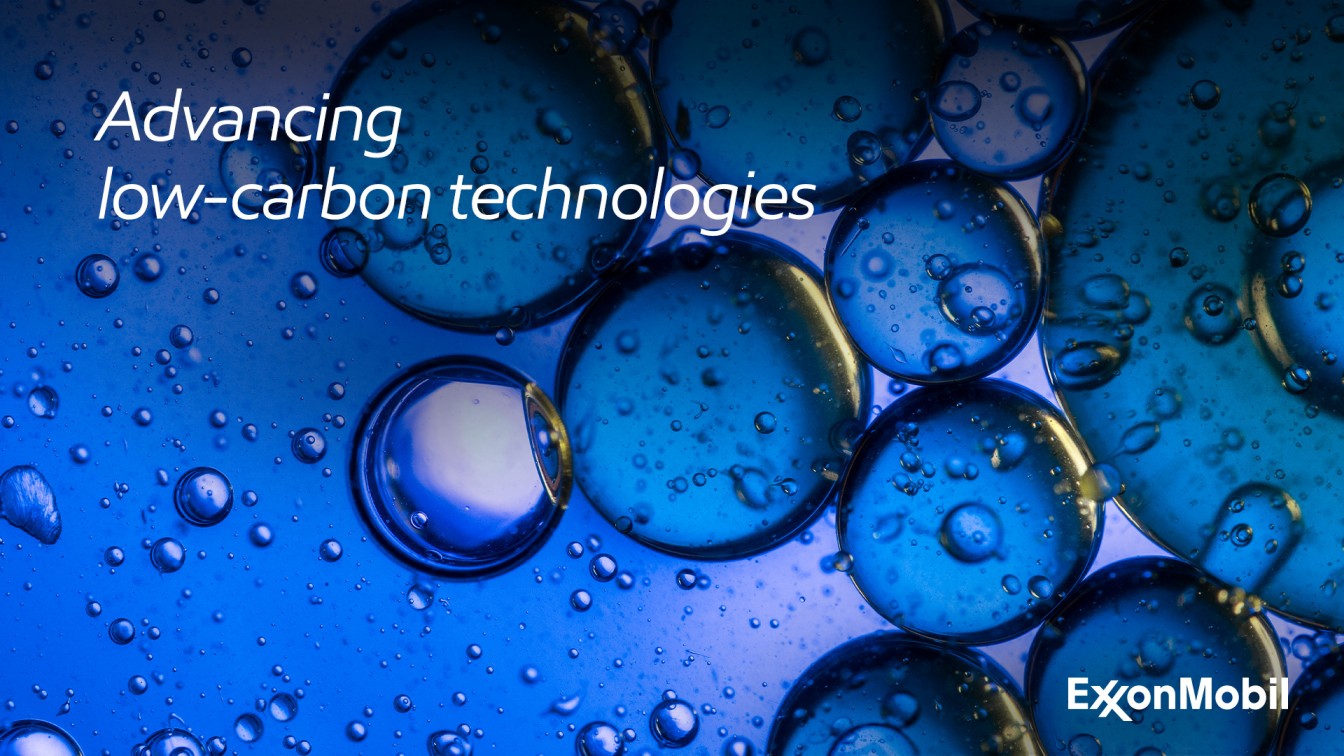| |
| |
| |
| Presented By ExxonMobil |
| |
| Generate |
| By Ben Geman ·Apr 07, 2021 |
| Hi readers! Today's Smart Brevity count is 1,213 words, 4.6 minutes. 🎸 And this month in 1977, Fleetwood Mac hit #1 on Billboard's album chart with "Rumours," which dominated the year and provides today's intro tune... |
| |
| |
| 1 big thing: White House focuses on climate scoreboard |
 |
|
| Illustration: Aïda Amer/Axios |
| |
| Axios' Andrew Freedman reports the White House is making the case that its climate moves to date create enough credibility to press other nations to bolster their commitments at an upcoming summit. Where it stands: Congress has barely begun digesting President Biden's proposed $2.2 trillion infrastructure package that's stuffed with the biggest clean energy investments any president has put forward. But a top official hinted Tuesday that it would rely on all the climate policy moves it has set into motion when Biden convenes world leaders for a virtual White House climate summit on April 22-23. - "We've taken robust climate action," White House deputy climate advisor Ali Zaidi told Axios in an interview.
- "I think that's being understood and received as a signal of this president's commitment and credibility on the climate issue," he said.
Why it matters: The administration is viewing the summit as a way to showcase the return of U.S. leadership on climate change after former President Trump abandoned the Paris Agreement (which Biden re-entered) and unraveled Obama-era rules and policies. Be smart: Although the infrastructure package will not have advanced far by the time the summit arrives, the administration can still point to it as intended policy, as well as at recently implemented steps to credibly urge other countries to cut emissions significantly by 2030. - "From literally day one the president has been animating federal action" on climate change, Zaidi said.
What's next: The White House intends to put forward a new emissions target, called a Nationally Determined Contribution, or NDC, detailing its 2030 commitments before the summit. - Per Zaidi, the administration has been engaged in an interagency "bottom-up analytical process" to determine how ambitious the U.S. 2030 target can be, and that this has found the tools now exist "to rapidly address climate change."
Read the whole story |
    |
| |
| |
| 2. Worsening drought fuels western wildfire fears |
 Reproduced from the U.S. Drought Monitor; Chart: Sara Wise Andrew reports that it's only early April, but parts of the West are already at mid-July levels of dryness — and scientists are warning that the upcoming fire season could be potentially as destructive as last year. Why it matters: This summer will mark one year since the West Coast experienced a historic spate of wildfires. The prospect of another severe fire season, along with concerns about water supplies, is raising questions about how to prepare the region — including its power grids — for the ravages of climate change. The details: Set against the backdrop of a long-term, human-enhanced drought, the current drought is forecast to expand and become more severe across much of the West, from Colorado to Montana, southwestward to California and Arizona. - Already, 40% of the West is classified as being in "extreme" to "exceptional" drought, the two most severe categories.
- With the arrival of the warm season, the prospects for widespread precipitation are rapidly dwindling, and scientists are raising alarms about a repeat of the deadly 2020 wildfire season.
- California, for example, has now had two back-to-back winters that have been drier than average, and temperatures have been consistently running above average there.
- The Colorado River Basin is already seeing its snowpack melt quickly after a below-average peak. The early melt could lead to a more severe fire season there as well.
Of note: California has adapted to the repeated instances of wildfire ignitions from electrical equipment by instituting rolling blackouts during periods of high fire danger. - As part of its far-reaching climate plans, the state is also adding large quantities of batteries for energy storage. These could reduce some of the impacts of planned power shutoffs, Bloomberg reports.
Go deeper |
    |
| |
| |
| Bonus: More on power, fires and weather |
| Texas: Axios' Rebecca Falconer reports...Weather-related problems were the leading cause of Texas power plants going offline during February's record cold snap that left millions of Texans in the dark, a preliminary report published Tuesday states. Read more California: Axios' Laurin-Whitney Gottbrath reports...A California prosecutor on Tuesday filed 33 criminal charges against Pacific Gas & Electric for the 2019 Kincade Fire, which injured six firefighters, destroyed hundreds of homes and forced nearly 200,000 people to evacuate. Go deeper |
    |
| |
| |
| A message from ExxonMobil |
| ExxonMobil's new Low Carbon Solutions business |
| |
 |
| |
| ExxonMobil Low Carbon Solutions is our new business working to advance breakthrough technologies, including carbon capture and storage, hydrogen and other technologies, from our industry-leading R&D portfolio. Learn more at ExxonMobil.com. |
| |
| |
| 3. Energy jobs pay far above the national average |
 Data: Energy Futures Initiative et al. report; Chart: Sara Wise/Axios New data shows both the promise and peril of the White House push to speed deployment of renewables while also accelerating the transition away from fossil fuels. Driving the news: A report on energy industry wages across sectors shows that they're far above the national median and more likely to provide healthcare and retirement benefits than the national average. - However, average hourly compensation in the fast-expanding wind and solar sectors is below oil and natural gas-related positions, and far below nuclear.
- The chart above is from the report published by the Energy Futures Initiative, the National Association of State Energy Officials and the BW Research Partnership.
Why it matters: The report arrives as the White House is pushing a massive infrastructure package that's heavy on clean energy initiatives — and promoting it as a way to create large numbers of jobs. Go deeper: The wage gap that threatens Biden's climate plan (Politico) |
    |
| |
| |
| 4. Shell says oil production is back in (the) black |
| Royal Dutch Shell, in a preview of its upcoming Q1 earnings report, said this morning it's expected to post a profit from its oil-and-gas production operations. Why it matters: Bloomberg notes that it will be the energy giant's "first profit from pumping oil since the start of the pandemic." - "The return to profit upstream is another signal that the industry is recovering from the historic slump," it reports.
- Shell noted it's "capturing the upside from the current commodity price environment."
Yes, but: Shell also estimates that February's winter storm in Texas will shave up to $200 million off its overall earnings, citing the effects on petrochemical operations, refined products revenue and oil-and-gas production. Speaking of the oil business, the Wall Street Journal has the latest on Saudi Aramco's positioning... "Saudi Arabia's energy giant is in advanced talks to sell up to a 49% stake in its oil pipelines to a consortium of U.S., Chinese and local investors for between $10 billion and $15 billion, according to people familiar with the matter," it reports. And the Financial Times reports that commodity trading giant Vitol "made record profits in 2020 as the gyrations in global energy markets triggered a windfall for the world's largest independent oil trader." |
    |
| |
| |
| 5. Here comes the electric Silverado |
 |
|
| 2021 Chevrolet Silverado. An electric version is coming soon. Photo: GM |
| |
| Axios' Joann Muller reports that General Motors will introduce an electric version of its popular Chevrolet Silverado pickup truck that will be built at the company's Factory ZERO assembly plant in Detroit. Why it matters: The announcement comes as GM is rapidly expanding its portfolio of battery-operated vehicles, with a plan to deliver more than 1 million EVs globally by 2025. It just unveiled the GMC Hummer electric SUV last weekend, joining the previously announced GMC Hummer electric pickup. How it works: The new electric Silverado will be designed from the ground up as an EV and will provide 400 miles of battery driving range, GM said in a virtual announcement Tuesday. - The vehicle is based on GM's new modular Ultium battery platform, which will be the basis for 30 EVs globally by the end of 2025.
- GM says the Ultium platform, along with new virtual development tools and technology, has shortened vehicle development times by nearly 50% to just 26 months.
What we don't know: The pricing of the electric Silverado or when it goes into production. |
    |
| |
| |
| 6. Beltway notes: EPA, Treasury, 2024 |
| Regulations: "The Biden administration is on track to propose by the end of July new limits on the emission of greenhouse gases from automobiles that are strong enough to meet 'the urgency of the climate crisis,' according to EPA Administrator Michael Regan." (Bloomberg) Finance: "It's the federal government's role to leverage how the private sector creates and distributes the technology to slow climate change, Treasury Secretary Janet Yellen said Tuesday." (MarketWatch) People: The advisory board of the advocacy group Mike Pence launched today ahead of a potential 2024 run includes Andrew Wheeler, who was President Trump's EPA boss, and David Berhardt, who was Trump's Interior Secretary. |
    |
| |
| |
| A message from ExxonMobil |
| ExxonMobil's new Low Carbon Solutions business |
| |
 |
| |
| ExxonMobil Low Carbon Solutions is our new business working to advance breakthrough technologies, including carbon capture and storage, hydrogen and other technologies, from our industry-leading R&D portfolio. Learn more at ExxonMobil.com. |
| |







No comments:
Post a Comment